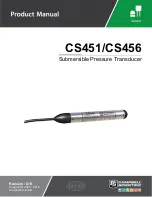
TK-373G
5
OPERATING FEATURES
●
List type system scan
A scan list can be set for each system.
The list to be scanned can be changed by changing the
display system
If many system have been set, the scan speed can be
increased by narrowing the systems to be scanned with scan
lists.
2) System lockout
The system lockout feature is used to lock systems out of
the scan sequence, and can be selected by programming in
the following two ways:
●
Fixed lockout
The system to be locked out is selected by programming.
When a locked system is selected, the Delete ( ) indicator
appears on the left of the SYSTEM indicator. The revert system
is scanned even if it is locked out. If there is a locked system,
the Delete ( ) indicator flashes during fixed scanning.
●
User selectable lockout
If the scan lockout feature is programmed to a key, the user
can lock systems out of the scan sequence with the key. To
lock a system out of the scan sequence, press the key when
the system is displayed. The Delete ( ) indicator is displayed
on the left of the SYSTEM indicator.
To unlock a system, select the system and press the key.
The Delete ( ) indicator disappears to indicate that the system
has returned to the scan sequence. The revert system is
scanned even if it is locked out. If there a locked system, the
Delete ( ) indicator flashes during fixed scanning. If all systems
are locked out, the scan stops and only the revert system is
received.
3) Drop-out delay time (Scan resume time)
If a call is received during scan, the scan stops. The scan
resume time can be programmed as 0 to 300 seconds in one-
second increments. The default value is 3 seconds.
4) Dwell time
The dwell time is the time after transmission ends until the
scan resumes in scan mode. It can be set 0 to 300 seconds by
programming. The default value is 3 seconds.
5) System/Group revert
System/Group revert can be programmed for one of the
following;
●
Last called revert
The system/group changes to the revert system or group
when a call is received with the system/group being scanned.
●
Last used revert
If a system/group call is received during scanning and the
PTT button is pressed for transmission and response within
the drop out delay time, the system/group is assigned as the
new revert system/group.
●
Selected revert
If the system/group was changed while scanning, the newly
selected system/group.
●
Se talkback
If the system/group was changed while scanning, the newly
selected system/group. The transceiver “talkback” on the
current receive group.
6) Scan message wait
The time for staying with the home repeater that receives a
signal during system scan and monitoring data messages can
be programmed. If there is no signal from the home repeater,
the system is scanned for about 50ms. If there is a signal,
three data messages are monitored. Normally, three data
messages are monitored for each system, and it can be
increased in multiples of three data messages per line to up to
eight lines.
If the repeater data message indicates that there is no call,
data monitoring is terminated and the home repeater of the
next system is scanned.
7) Group scan operation
Group scan can be programmed for each group. In addition
to the ID codes of the selected group, the ID codes of the
other groups that are permitted for group scan are decoded.
(The two fixed ID and block decode codes are always decoded.)
If, during group scanning, a call is received with one of the
selectable group ID codes for which group scan is enabled,
the group display indicates the group number that the call came
in with. That group then becomes the new selected group.
Group scan resumes after the specified dropout delay time or
dwell time shared by the system scan elapses.
8) In Conventional system.
If QT or DQT is set for the group, the groups, including
signalling, are scanned.
In case of the priority group is set in conventional system, if
a group scan (including group scan during a system scan)
temporarily stops (receiving) in a group that does not have
priority, a look back is performed to the priority group. Look
back is performed according to the look back time A and B
settings. If a call is received on the priority group, reception
immediately switches to the priority group.
4. Details of Features
1) Time-out timer
The time-out timer can be programmed in 15 seconds
increments from 15 seconds to 600. If the transmitter is keyed
continuously for longer than the programmed time, the
transmitter is disabled and a warning tone sounds while the






































